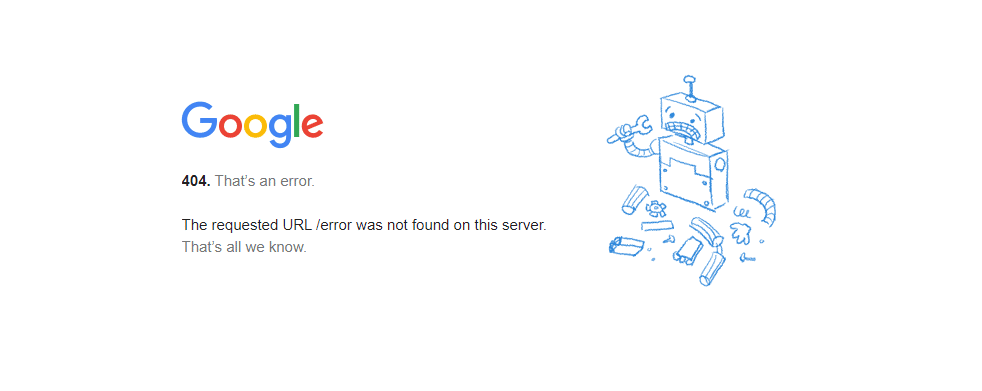Table of Contents
Best 10 Backlink Strategies to Start Climbing the Ranks

If you’re struggling with your SEO efforts and not seeing the results you’re looking for, then I highly recommend that you start building a backlink strategy. With the right approach, you can get high-quality links to improve your pages’ rankings on the SERPs and your website’s authority as a whole.
If this sounds like something you’d like to try, then you’ve come to the right place because I’ve compiled a list of 7 backlinking strategies that are sure to work for your business along with some extra information for you to fully understand all about these links.
Want to discover the secrets of backlinking? Let’s get started!
Table of Contents
What Are Backlinks?
Backlinks, also known as “inbound links” or “incoming links”, are those links that point from an external site to yours. Not to be confused with internal links (links between pages on the same site), backlinks are any text, image, or button that directs users from a different site to your domain.
Google’s algorithm uses inbound links to determine how trustworthy a webpage is and rank it accordingly in the SERPs. They’re a vote of confidence from other sites and indicate that your content is both valuable and relevant to users. Thus, both the quantity and quality of your backlinks play a crucial role in determining your ranking.
The Role of a Backlink Strategy in Your SEO Efforts
A backlinking strategy is a process to actively generate high-quality links and direct organic traffic to your website while building your domain authority. All of these elements are important ranking factors that search engines consider when determining which are the most relevant pages to show among the first search results.
Moreover, backlinks have a direct impact on your discoverability, since both visitors and search engine crawlers are likely to follow links from external sites to your own pages.
A good SEO backlink strategy will show users how your company fits among other businesses out there. Your backlinks can serve as proof of a good relationship between two sites, as they’re helping each other grow.
What Is a High-Quality Backlink?
A high-quality backlink is a relevant link from a reputable website, and the cornerstone of any backlink strategy. It’s a recommendation from another website and proof that your content is not only valuable but also worth linking to.
As I’ve mentioned before, high-quality backlinks can have a direct impact on your site’s placement in the SERPs. So, having hundreds of random backlinks will have no effect on your ranking. In fact, Google often penalizes your site if it detects unnatural link building patterns because they’re often the result of buying links, exchanging links, or using automated link building software. These blackhat backlink strategies lead to lower rankings and even the removal from search results altogether.
Therefore, it’s essential to focus your backlinking strategy on obtaining high-quality backlinks. To achieve this, you need to pay close attention to the link’s context, on top of the page’s DA. Your incoming links should be placed naturally within the content of the referring domain. The link’s anchor text should also be relevant to your linked content and not overly optimized with keywords.
Best Backlink Strategies to Start Climbing the Ranks
There are many, many backlinking strategies you can use to boost your SEO, and I know how hard it can be to know where to even get started. So, here are some excellent ideas for you:
1. Create quality content
If you have interesting and valuable assets on your website, then other sites will naturally want to link to them —and you’ll have half the job done! While this is a scalable way to build quality backlinks, you have to do it right so it doesn’t become a huge waste of time and effort.
There are certain types of content that websites usually prefer to link to, such as infographics, long-form guides, data-driven studies, videos, resource pages, and listicles, among others.
If possible, I suggest that you try to include stats and hard data that back up your claims. This will give your assets more authority and increase the likelihood of other sites picking up your content.
2. Try your hand at guest blogging
Just like you can produce content for your site, you can do so for another blog in your niche to earn a backlink and increase your visibility and authority.
You’ll have to scour the web for relevant websites with high DA you can contribute to. Then, you should reach out to the blog owner or editor and send them a guest post pitch. Most pages tend to have a “Contact Us” or “Write for Us” page where you can either find an email address or fill in a form to get in touch with the team in charge of content.
The key to this backlink strategy is to come up with ideas for blog posts that would be valuable for the blog’s audience and related to its existing content.
It takes consistent hard work to set a good guest blogging strategy into place, but luckily, you can entrust the job to specialized link building companies that already have the expertise and a team of experienced writers to do it for you.
3. Implement reverse outreach
This backlinking strategy might sound similar to guest blogging at first, but it actually involves requesting a link from another website, based on your content’s high value.
You’ll need to reach out to relevant sites in your industry or niche and offer content from your own blog that they can link to. It’s important to do a thorough research beforehand, looking for topics that are related to your existing content and identifying any gaps or areas you could potentially contribute to and provide additional value.
Keep in mind that reverse outreach is all about building a mutually beneficial relationship with other bloggers, so be polite and professional when you reach out to them, introduce yourself, and explain why and how they’d benefit from giving you that backlink.
4. Become a source for reporters and publishers
Another way to reach out to other bloggers and even to journalists as part of your SEO backlink strategy is by leveraging HARO (Help A Reporter Out). This is a free service that connects reporters and publishers with reliable and relevant sources for their content.
After subscribing, you’ll start receiving emails with queries from writers. While they’ll all be relevant to your industry or niche, you can pick the ones that you like the best and provide the content the journalist needs. In exchange, you’ll get a backlink from a high DA site, referral traffic to your site, and even a brand awareness boost.
5. Use the skyscraper technique
If you’re struggling with finding content inspiration for your SEO backlink strategy (hey, it happens to the best of us!), then it can be a good idea to look into developing skyscraper content.
It’s rather simple to get started. You just need to take a relevant keyword you want to rank for, look it up on Google, and check the results on the first page. There, you’ll discover the type of content people are getting and either identify any gaps you can cover with your own assets or create a similar piece from scratch.
If you choose the latter approach, though, you should focus on creating something that’s significantly better and more useful.
6. Engage in broken link building tactics
Ever come across the infamous “404 error”? Well, that’s a broken or “dead” link, one that no longer works or exists on a given website. These links can negatively impact user experience and lead to a higher bounce rate while damaging the site’s credibility and reputation. That’s why broken link building tactics present an opportunity for you to contact website owners or bloggers and offer them a solution to this issue.
You can use one of the many broken link checker tools available online to identify relevant broken links you can replace with your own content. Then, reach out to the website owner and politely make your offer, making sure to highlight the value you’re providing to increase your chances of earning that backlink. By doing this consistently, you can easily create a solid SEO backlink strategy.
7. Share your content on social media
You might have the best backlink strategy out there, but it won’t be complete if you don’t promote your content so other website owners and bloggers can find it.
But more than increasing your visibility, social media can help you establish relationships with people you’ve already partnered with and encourage others to do the same, potentially leading to more backlinks.
Another tactic you can use is to contact people and companies you’ve shared links with and ask them whether they’d be willing to share your content on their social media. If you have a good relationship with them, there are high chances they will accept.
How Yum Yum Digital Can Help with Your Backlink Strategy
Backlinking strategies take time to plan and implement, and you might not see the results you’re looking for for quite a while. To ensure your tactics are the right ones for your site and your niche and that you’re not needlessly wasting time and resources, you can partner with a backlink company, like us.
Here, at Yum Yum Digital, we take the time to discover exactly what you need to start earning those backlinks. We offer highly-tailored work and professionally written content that’s always pre-approved by the websites we work with.
Being incredibly meticulous and only implementing whitehat tactics has allowed us to work with websites of a wide variety of industries and reach huge sites of DA 80+. If this sounds like something you’re looking for, get in touch! We’d be happy to give you a hand😄.
Wrapping Up
I know how tempting it can be to start trying out all of these ideas as soon as you finish reading this post, but it’s a better idea to gradually work your way up. In fact, one of the best backlink strategies I can give you (yes, a bonus one 😜) is to avoid going all out from the very beginning, even if you have the time and resources to do it.
Each of these strategies can give you a good starting point. Then, when you have a few great pieces of content, knowledge of the most relevant bloggers in your industry, and sorted out your immediate priorities, you can begin to expand your scope.








